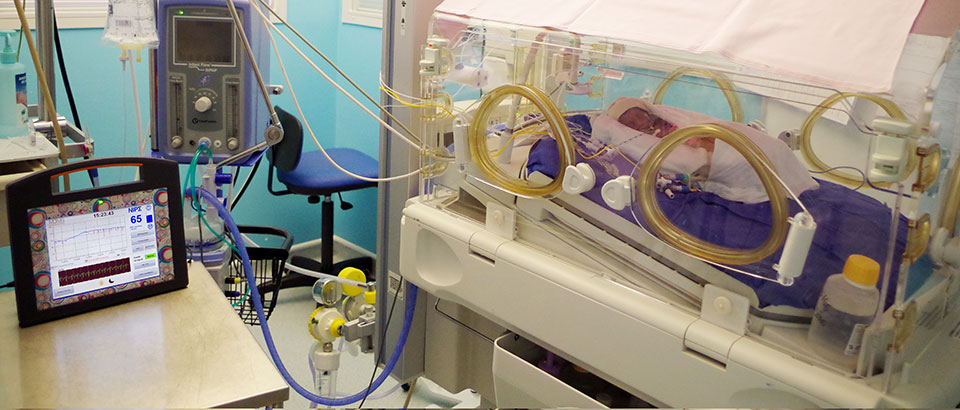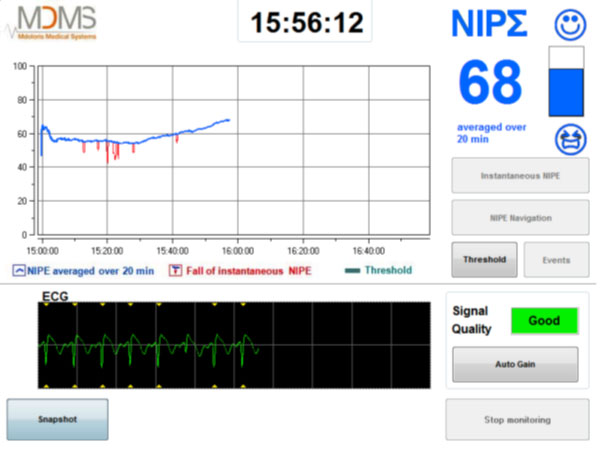
Why using NIPE technology
- Non-invasive and continuous measurement
- Easy to Read
- Evaluation of comfort and discomfort with NIPEm
- Evaluation of prolonged pain with NIPEm
No additional sensors required and analysis in real time.
A scale of 0 to 100 (the higher the index is highest shows confortabilitatea patient).
Two indices: NIPEm (average) and nipples (instantaneous) correlation prolonged and acute pain respectively.
To optimize environmental conditions: noise, light, position, choosing … CPAP mask (Kuissi 2009 JFRN – Rethore 2011 JFRN)
Illustrates welfare arising from the development of care: presence of parents, cocooning, skin-to-skin contact (Alexandre 2013, Arch Pediatr – Blouin 2014 JFRN)
In order to adapt analgesia for postoperative patients. (Faye 2010, Clin J Pain – De Jonckheere 2011 Conf Proc IEEE Eng Med Biol Soc – Rakza 2011 JFRN – Blouin 2014 JFRN)

NIPEm (average NIPE) is displayed in blue on the top right of the screen and the blue curve. This index refers to the general welfare of the newborn, as well as prolonged pain.
The objective is to keep the blue line above 50. Below this threshold, consider the patient a child is uncomfortable or in pain status. At the time, it is important to tailor treatment or to adapt to environmental conditions in order to move the curve back to your comfort zone.
NIPEi (instantly NIPE) is displayed as red spikes on the main screen of the nipples, it is used to assess acute pain during a procedure potentially painful or stressful. This diagram displays painful procedures in order to adjust care accordingly.
The interpretation is the same as for NIPEm: If the index is below 50, we conclude that the situation is painful or stressful for the patient.
 ROMANA
ROMANA